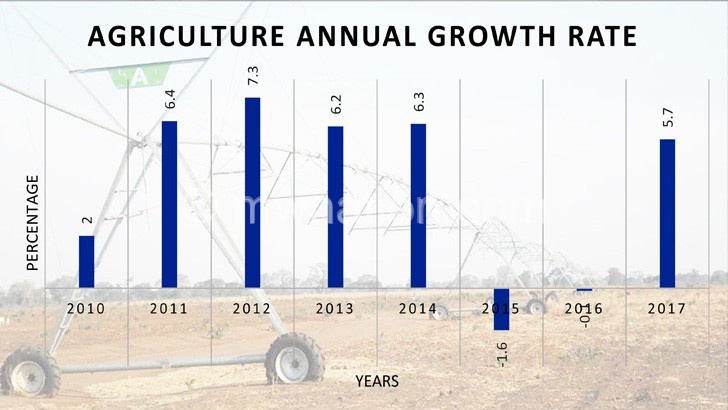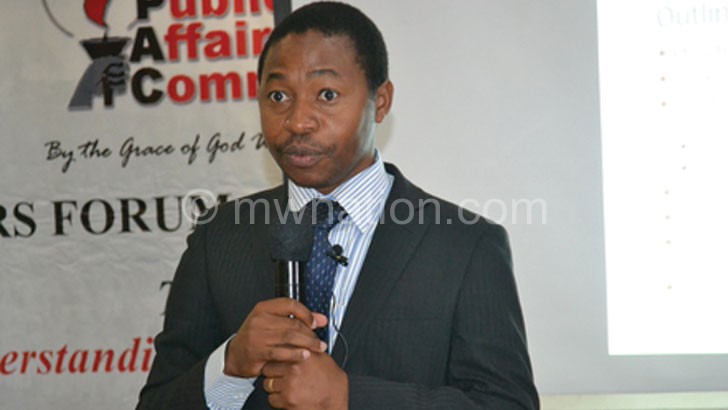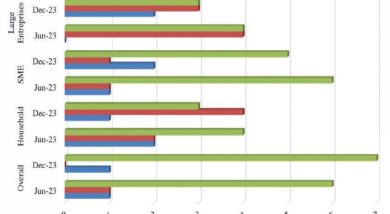RBM explains 5.6% gdp growth forecast
The Reserve Bank of Malawi (RBM) has said the projected 5.6 percent real gross domestic product (GDP) growth for this year is based on the expected rebound of the agriculture sector.
However, economist Gilbert Kachamba, who is head of economics department at Catholic University, said a business unusual approach to development could yield a growth higher than 5.6 percent.
The agriculture sector’s contribution to GDP—the monetary value of all finished goods and services within a country’s border in a year—which has been marginally shrinking in recent years, is expected to be 28 percent this year from last year’s 27.9 percent, according to RBM’s published national accounts.
Between 2010 and 2011, the agriculture sector had been contributing about 30 percent to the GDP, but remained constant at 29.9 percent between 2012 and 2015 before it fell further to 27.9 last year.
RBM projected the economy will grow by 5.1 percent in 2016, but was later revised by 2.2 percentage points downwards to 2.9 percent, which was attributed to the slowdown in economic activity due to a contraction in agricultural activity induced by El-Nino weather phenomenon .
The 5.6 percent projection for 2017 raised a lot of questions from economists who argue this is another far-fetched dream as not much has changed since 2016.
Kachamba said if “We can change the way we do things, we can even go beyond 5.6 percent”.
He said there is a need to improve on infrastructure, especially in the energy sector, which will improve the ease of doing business.
Malawi is an agro-based economy and the sector is expected to grow by 5.9 percent in 2017 compared to the negative 0.1 percent growth in 2016, according to RBM.
Within the sector, crop and animal production, hunting and related service activities are expected to contribute 19 percent to GDP while forestry and logging will contribute seven percent whereas fishing and aquaculture will contribute 1.4 percent.
Analysts say although the agricultural sector remains highly funded in Malawi, the sector lacks capital intensive investment which would be used to spur production.
In Malawi, agriculture is predominantly rain-fed which leaves it vulnerable to weather-related shocks.
In an earlier interview, Civil Society Agricultural Network (CisaNet) national coordinator Tamani Nkhono-Mvula said there is need to improve policies that govern the agricultural sector.
He urged government and other key stakeholders in the agricultural sector to ensure that agriculture is diversified, not dependent on rainfall.
“Looking at the growth that we have been experiencing in the past five years, the agricultural sector has not done well, contributing an average of three percent which is half of what is required,” he said.
Chancellor College economics professor Ben Kaluwa agreed with Nkhono-Mvula, stressing the need to diversify in and outside agriculture.
He also spoke on the need to invest in other services sectors, including refinery and manufacturing.
According to the RBM, wholesale and retail is currently the second largest contributor to the economy and is estimated to contribute 16.1 percent to the GDP this year, up from 15.1 last year.
Third from wholesale and retail is the manufacturing sector, which is projected to contribute 9.4 percent though relatively lower than last year’s 9.5 percent.
Another sector which is showing potential to push the economy up is the financial and insurance services and is expected to contribute 5.3 percent this year, up from 5.2 percent in 2016.
Ironically, there are other sectors which have remained constant in terms of GDP contribution, for instance, the professional, scientific and technical activities, administrative and support service activities at 0.3 percent between 2010 to date, mining and quarrying at 0.9 percent between 2014 to date. n






